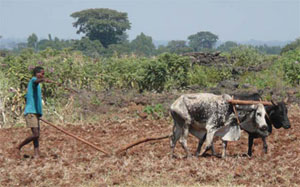2.2.1 Physical hazards
Physical hazards are those substances or conditions that threaten our physical safety. Fires, explosive materials, temperature (hot or cold), noise, radiation, spills on floors and unguarded machines are some examples of physical hazards.
Physical hazards also include ergonomic hazards which occur when the type of work, body position and working conditions put strain on your body. This happens when your capacity for work is restricted by the type of work. These instances are hard to spot since you don’t always immediately notice the strain on your body or the harm these hazards cause. Short-term exposure in badly designed work may result in muscle fatigue or tiredness, but long-term exposure can result in serious long-term injuries of the musculo-skeletal system. Injera baking is one of the hardest tasks a woman faces routinely.
She spends one to two hours in a forced sitting and bending position which can be damaging to her body. Ergonomic hazards also exist among farmers, for example while manually ploughing and cleaning the weeds in farmland (Figure 2.2).

2.2 Categories of environmental health hazards
